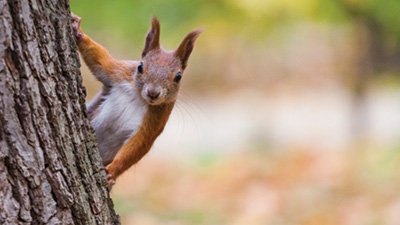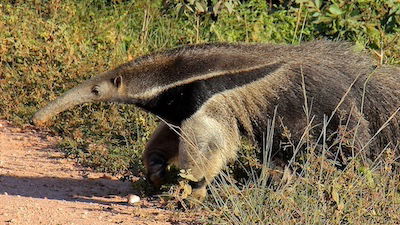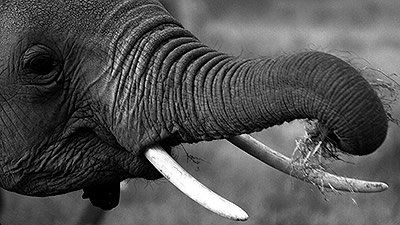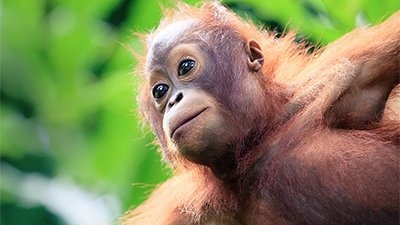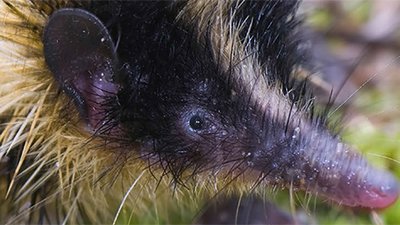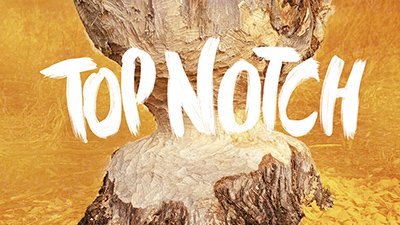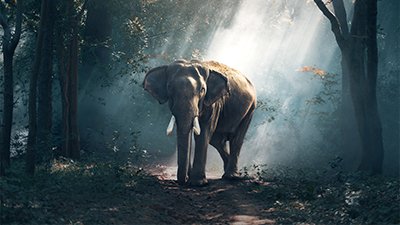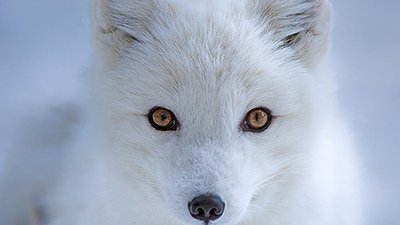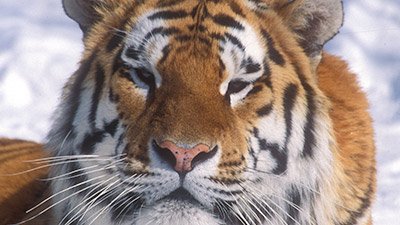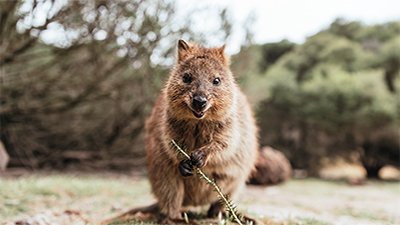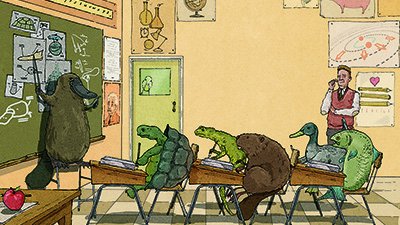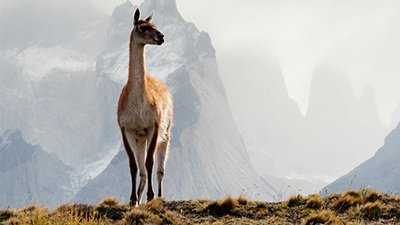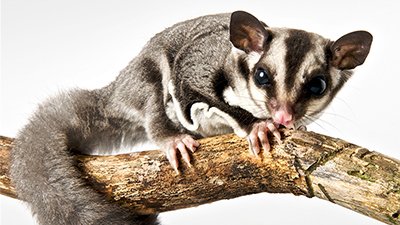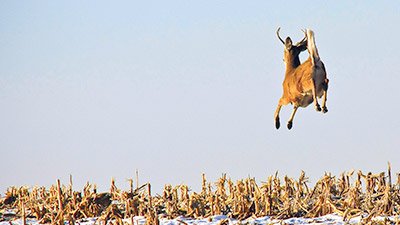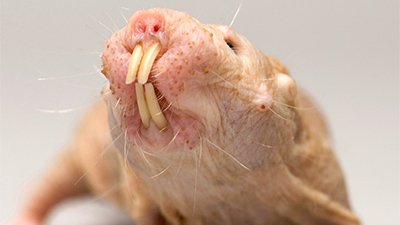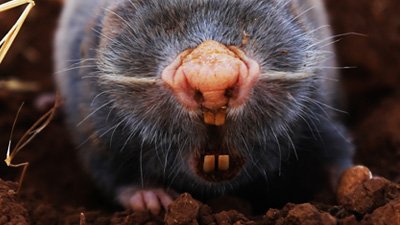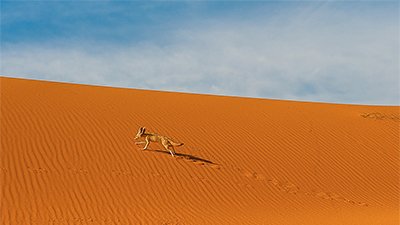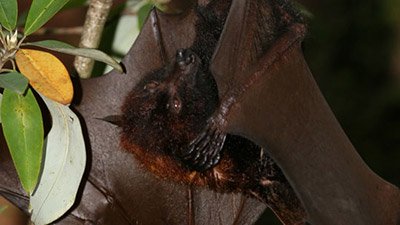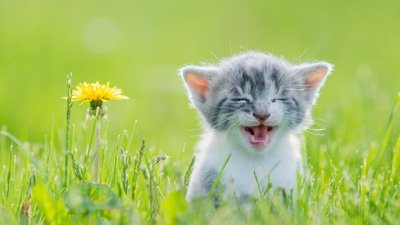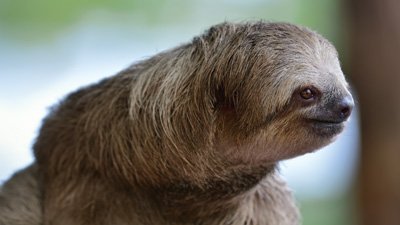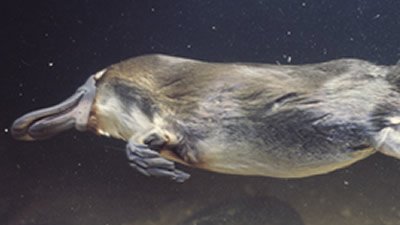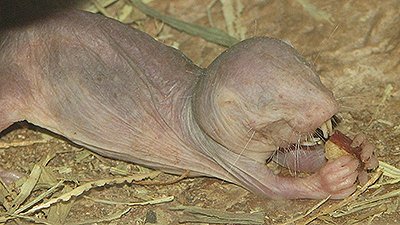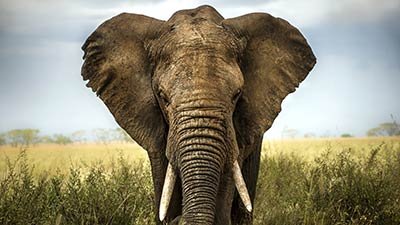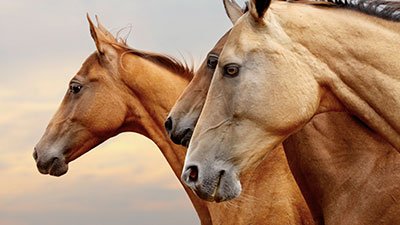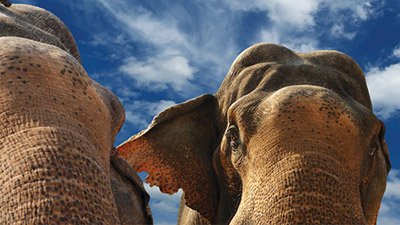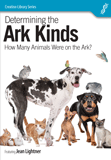Mammals
Live-birth or Eggs?
Evolutionists aren’t joking when they ask, “What came first, the live-birth or the egg?” Evolutionists generally consider the egg-laying mode of reproduction to be more primitive than live-bearing. If egg-laying really is more primitive, then where are all the early egg-laying mammals?
The Platypus—Egg Laying Mammal?
The platypus has perplexed scientists since its discovery by Europeans in the late 18th century. There is nothing in the fossil record to indicate that the platypus was ever anything other than a platypus. It is not a living “transitional” form. It is a truly unique creature, and one that continues to baffle those who insist on making it fit into an evolutionary tree.
Apes and Tools
While apes are skilled tool-users, their skills are generally no better than the abilities of some birds, dolphins, and some elephants. As creationists, we know that the anatomical similarities between man and ape are the result not of a common ancestor, but of a common Creator. Furthermore, man was made in God’s image (Genesis 1:26–27).
The Cat Kind
Whether it’s a fierce tiger basking in the sunshine or a fun-loving tomcat crouched and waiting to play with its owner, one of the most beautiful of God’s creatures is the cat. Big or small, roaring or purring, cats possess unique characteristics: they are meticulous groomers, they love to slink, pounce, and play, and they are independent.
The Dog Kind
The originally created canine, like all kinds of creatures, was created to reproduce after its kind. The canine genome originally created by God has provided the raw material for an innumerable variety of canines, but they are all still canines. No evolution in the molecules-to-man sense was required to produce dog diversity.
Mammals Topics
News About Mammals
-
Oct. 9, 2025 from Ken Ham Blog
The discovery of a new otter species highlights observable diversity, aligning with the creation model of kinds and God’s design in nature.
-
Sept. 4, 2025 from Ken Ham Blog
Some squirrels have started hunting smaller mammals!
-
July 31, 2025 from Ken Ham Blog
According to a new study, the specialized ability to primarily dine on ants and termites has evolved “at least 12 times since the Cenozoic era began.”
-
July 8, 2021 from Ken Ham Blog
Evolutionists can’t explain the complex design and usefulness of the elephant trunk, but Christians know who made it.
Articles About Mammals
-
Dec. 7, 2025 from Answers Magazine
Reindeer, with their brilliant design for navigating life in a frigid home, will go down in history.
-
Oct. 1, 2025 from Answers Magazine
You know red pandas are adorable, but how well do you really know them? Check your red panda prowess with these questions.
-
April 28, 2024 from Answers Magazine
The strength of a wolf pack isn’t its numbers or the fear it inspires.
-
April 7, 2024 from Answers Magazine
There’s more to a squirrel’s mad dash to collect nuts than meets the eye.
-
Jan. 7, 2024 from Answers Magazine
With their red hair and funny faces, orangutans have won a place in our hearts. But they stand out, even among apes, for other reasons too.
-
May 7, 2023 from Answers Magazine
Watch out—this critter’s outrageous hairdo is more than a fashion statement. With a prickly exterior & a matching disposition, the secret is in the spines.
-
April 1, 2023 from Answers Magazine
Beavers expertly engineer our waterways and landscapes—but can we work together to better steward God’s creation?
-
Jan. 1, 2023 from Answers Magazine
There are giants among us—giant animals, that is. God has given these incredible creatures the special features they need to live large.
-
Dec. 4, 2022 from Answers Magazine
When winter arrives, this fox takes off his thin summer coat and puts on a luxurious new wardrobe just for the occasion.
-
April 30, 2022 from Answers Magazine
Dogs are always sniffing around, but it’s not because they’re always hungry. Unlike us, they interpret the world primarily through smell.
-
April 1, 2022 from Answers Magazine
The wolverine’s fearsome features help this formidable creature survive in its harsh environment.
-
Feb. 1, 2022 from Answers Magazine
The variety of domestic cats and wild cats like the Sumatran and Siberian tigers display common features, impressive diversity, and God's glory.
-
Jan. 3, 2022 from Answers Magazine
Beavers aren’t just great dam builders. They’re specially equipped to work in the water as God’s wetland engineers.
-
Sept. 12, 2021 from Answers Magazine
Even the cutest critter reminds us that we live in a fallen world.
-
April 1, 2021 from Answers Magazine
The platypus may not fit into a manmade box, but it fits perfectly in God’s design.
-
Jan. 1, 2021 from Answers Magazine
The next time you consider skipping a workout, remember that exercise isn’t for the birds . . . or bears.
-
Dec. 19, 2020 from Answers Magazine
The snow leopard survives in its frigid climate thanks to a collection of cool features.
-
Aug. 23, 2020 from Answers Magazine
Meerkat clans were working together in southern Africa long before Mark Zuckerberg and Jack Dorsey came on the scene.
-
July 1, 2020 from Answers Magazine
From the giant Newfoundland to my short-legged dachshund, dogs are a pleasing reminder of our Creator’s fantastic ingenuity.
-
July 1, 2020 from Answers Magazine
Common design doesn’t mean common ancestry—instead it points to a common Designer.
-
July 1, 2020 from Answers Magazine
Despite living continents apart, this caravan of creatures clearly confirms the Bible’s history.
-
June 28, 2020 from Answers Magazine
The slow loris’ large eyes have a reflective layer to help them see in almost total darkness.
-
June 20, 2020 from Answers Magazine
The amazing design of fingerprints helps us get a good grasp on God’s Word.
-
June 6, 2020 from Answers in Depth
A skeptical social media post is making the claim that the lesser mole-rat (one of several blind mole rats) is evidence against intelligent design.
-
Jan. 1, 2020 from Answers Magazine
How can a bear live on plants? Surprisingly well.
-
Sept. 22, 2019 from Answers Magazine
Want to race? It’s easy to see why white-tailed deer have become winners in the Americas.
-
Sept. 1, 2019 from Answers Magazine
It’s just as well that these unsightly creatures live underground.
-
July 12, 2019 from Answers in Depth
Researchers studying mole-rats and the East African root rat discovered that several had pain insensitivity to different irritants (referred to as “algogens”).
-
June 21, 2019 from 10 Cursed Creatures with Undeniable Design
The giraffe strolls on stilt-like legs, and its neck parades high in the sky. But the giraffe is no comic freak of nature. It displays divine design.
-
May 1, 2019 from Answers Magazine
Have you heard? This little creature is all ears.
-
April 17, 2019 from 10 Cursed Creatures with Undeniable Design
As the only true flying mammals, bats are well equipped for the hunt. Their wings can maneuver nimbly to abruptly change directions and carry them swiftly.
-
Aug. 26, 2018 from Answers Magazine
What a nose! If you’ve ever seen a bloodhound at work, you can’t help but be impressed.
-
July 31, 2018 from Answers Magazine
Hiding in Indonesia’s tropical forests is one of the cutest—and most creatively designed—creatures on the planet.
-
May 20, 2018 from Answers Magazine
You donʼt need to be an expert to appreciate the fine details that make this sleek machine run.
-
April 17, 2018 from Answers Magazine
Bats are amazing animals that display the unlimited creativity of our God.
-
Oct. 30, 2017 from Answers in Depth
The colorful history of the domestic cat, filled in by the latest paleogenetic study, illustrates many fun facts that are consistent with biblical truth.
-
Aug. 11, 2017 from 10 Cursed Creatures with Undeniable Design
An elephant’s trunk is like a built-in multi-purpose tool. Weighing in at roughly 300 to 400 pounds, the trunk is no lightweight piece of equipment.
-
June 13, 2017 from 10 Cursed Creatures with Undeniable Design
From an acorn-size egg hatches a creature with a duck-like bill, beaver-like tail, and reptile-like stance. It’s a bird! It’s a reptile! It’s a—platypus!
-
June 2, 2017 from Answers in Depth
Naked mole-rats survive extreme oxygen deprivation in their crowded burrows by switching on fructose metabolizing machinery in their heart and brain cells.
-
May 21, 2017 from Answers Magazine
Quick, can you tell the difference between an African and an Asian elephant?
-
Feb. 19, 2017 from Answers Magazine
Evolution is hard-pressed to explain this prickly little digger. That’s because the Creator made it like no other single animal.
-
Oct. 2, 2016 from Answers Magazine
The Creator gave a few select animals—such as horses and camels—unique abilities to serve alongside people in harsh environments.
-
Sept. 22, 2016 from Answers Magazine
Scientists are learning more and more about the marvelous abilities of animals, which go far beyond physical design.
Recommended Resources

Answers in Genesis is an apologetics ministry, dedicated to helping Christians defend their faith and proclaim the good news of Jesus Christ.
- Customer Service 800.778.3390
- Available Monday–Friday | 9 AM–5 PM ET
- © 2026 Answers in Genesis




